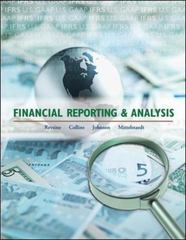Question
1)Suppose the elasticity of demand for leather coats is -2.00. The elasticity of supply for leather coats is .40. The elasticity of demand for fleece
1)Suppose the elasticity of demand for leather coats is -2.00. The elasticity of supply for leather coats is .40. The elasticity of demand for fleece coats is -.80, while the elasticity of supply for fleece coats is 1.15.
a)The government imposes a tax of $25 per coat on all types of coats. How much has the after-tax price changed in each market compared to the non-tax case?
i)EdL = -2.00EsL =0.40
ii)EdF = -0.80EsF =1.15
iii)Es = Price Elasticity of Supply
iv)Ed = Price Elasticity of Demand
v)Fraction of tax borne by consumer = Es/(Ed+Es)
vi)Tax Burden on Consumers
(1)Leather Coat: 0.40/(2.00+0.40) = 0.1667
(2)Fleece Coat: 1.15/(0.80+1.15) = 0.5897
vii)Imposes a tax of $25 per coat on all types of coats
(1)Leather Coat: 0.1667*$25 = $4.17 (after tax price increase)
(2)Fleece Coat: 0.5897*$25 = $14.74 (after tax price increase)
The question to answer is B and C
b)Suppose the untaxed market equilibrium price and quantity is $300 and 4 million, respectively, for the leather coats, and $50 and 40 million, respectively, for the fleece coats. What is the deadweight loss in the market for all coats resulting from the tax?
C)Use the information from b. to continue. Suppose the government eliminates the tax on fleece coats, and raises taxes on the leather coats to roughly make up for the lost revenue. Since there were 10x as many fleece as leather, the government raises the tax on the leather coats by a factor of 10 to $250 per coat. Calculate the deadweight loss in the coat market now.
Step by Step Solution
There are 3 Steps involved in it
Step: 1

Get Instant Access to Expert-Tailored Solutions
See step-by-step solutions with expert insights and AI powered tools for academic success
Step: 2

Step: 3

Ace Your Homework with AI
Get the answers you need in no time with our AI-driven, step-by-step assistance
Get Started


